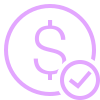You’ve poured hours into optimizing your website for SEO. Your traffic is growing, but your sales or leads? Crickets. Sound familiar? The problem isn’t your SEO efforts—it’s what you’re optimizing for. High-traffic keywords might boost your rankings, but if they don’t align with what your audience actually wants, you’re leaving money on the table.
In this guide, you’ll learn how to shift from chasing vanity metrics to targeting keywords that convert by aligning with buyer intent. Let’s turn your SEO traffic into paying customers.
Why High-Traffic Keywords Don’t Always Equal Conversions
Not all keywords are created equal. For example:
- Informational queries like “what is SEO” attract beginners who aren’t ready to buy.
- Commercial intent keywords like “best SEO agency in [city]” or “buy SEO tools” signal users are closer to making a decision.
If your blog ranks for “how to start a blog” but your goal is selling blogging courses, you’re attracting the wrong crowd. Prioritize keywords that match your audience’s stage in the buyer’s journey.
How to Identify Commercial Intent Keywords
Commercial intent keywords are gold mines for conversions. Here’s how to find them:
- Look for Transactional Modifiers
Words like “buy,” “price,” “review,” “near me,” or “best” often indicate commercial intent. Use tools like Ahrefs or SEMrush to filter keywords with these terms. - Mine Google’s “People Also Ask”
Type your seed keyword into Google and scroll to the “People Also Ask” section. Questions like “Which [product] is best for [problem]?” reveal pain points and purchase-ready intent. - Use AnswerThePublic
This tool visualizes search questions. For example, searching “CRM software” might show queries like “CRM software for small businesses with pricing” – a clear buying signal.
Optimize Landing Pages for Intent
Once you’ve identified commercial keywords, tailor your pages to match user expectations:
- Informational Intent: Create blog posts or guides (e.g., “How to Choose an SEO Agency”). Include soft CTAs like “Download our checklist” to nurture leads.
- Transactional Intent: Direct these keywords to product pages, pricing guides, or service offers. Use clear, urgent CTAs like “Start Free Trial” or “Get a Quote.”
Example:
A SaaS company targeting “best email marketing tools” should send users to a comparison page highlighting their product’s benefits over competitors, with a prominent “Try Free for 30 Days” button.
Case Study: How Refining Keyword Targeting Boosted Conversions by 40%
A home renovation company noticed their blog post “How to Remodel a Kitchen” ranked well but generated zero leads. After auditing their keywords, they realized:
- The post targeted informational queries (e.g., “kitchen remodel ideas”).
- Their real customers were searching for “kitchen remodeling services [city]” or “cost to remodel a kitchen.”
They optimized a service page for commercial keywords, added customer testimonials, and included a “Get a Free Estimate” CTA. Result? A 40% increase in consultation bookings within 3 months.
Actionable Tip: Audit Your Top-Ranking Pages
Open Google Search Console and identify your top 10 pages by traffic. Ask:
- Do these pages target informational, commercial, or navigational intent?
- Are they aligned with your conversion goals (e.g., sales, sign-ups, leads)?
- If not, can you update the content or redirect traffic to a more relevant page?
Pro Tip: Use Hotjar or Crazy Egg to see how users behave on these pages. High bounce rates? They’re likely not finding what they expected.
Conclusion: Stop Chasing Traffic, Start Chasing Buyers
SEO isn’t just about rankings—it’s about attracting the right audience. By aligning your keywords with buyer intent, you’ll turn passive readers into loyal customers.
Ready to convert? Start by auditing one high-traffic page this week. Swap generic keywords for commercial ones, tweak your CTAs, and watch your ROI grow.







